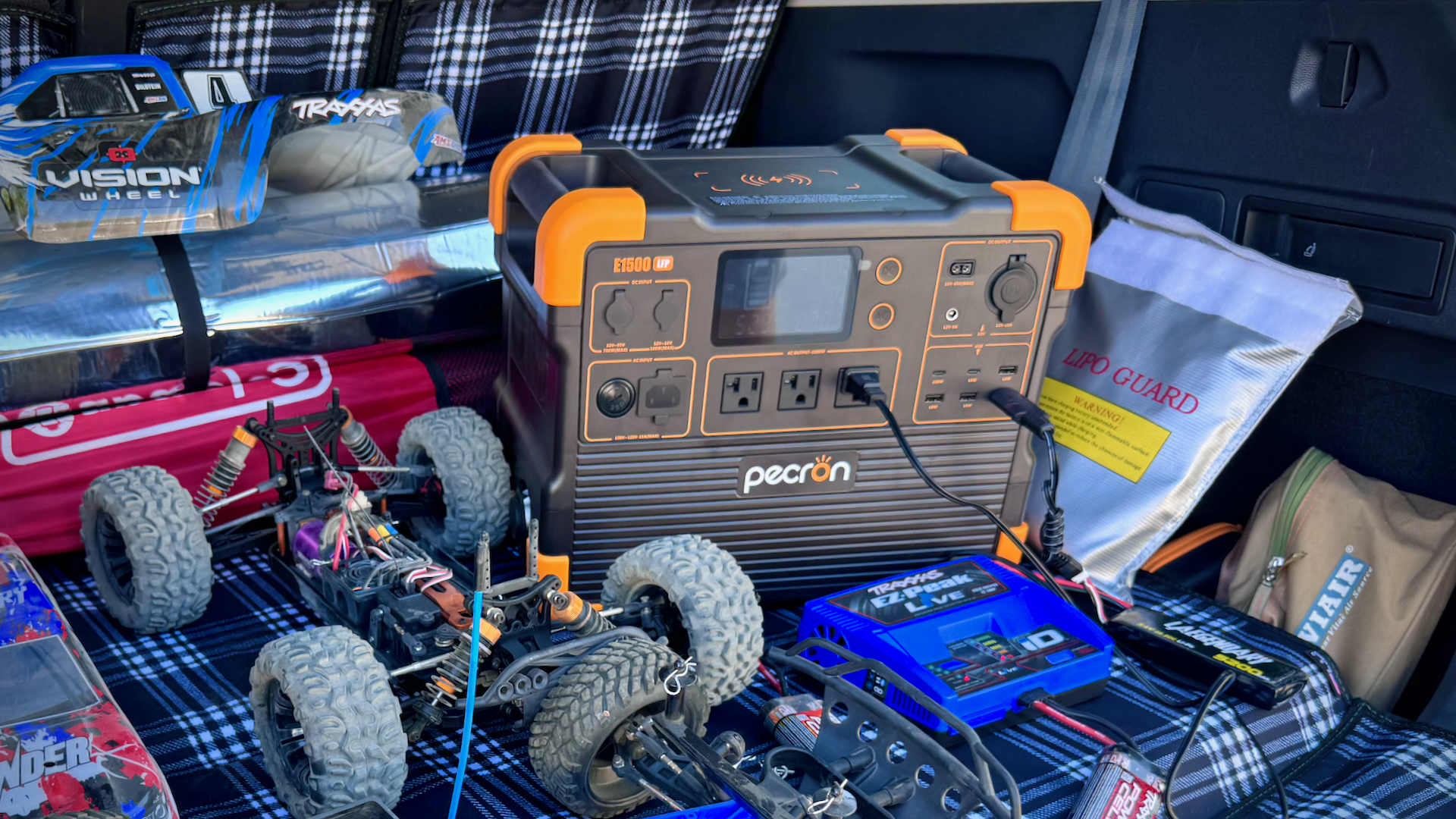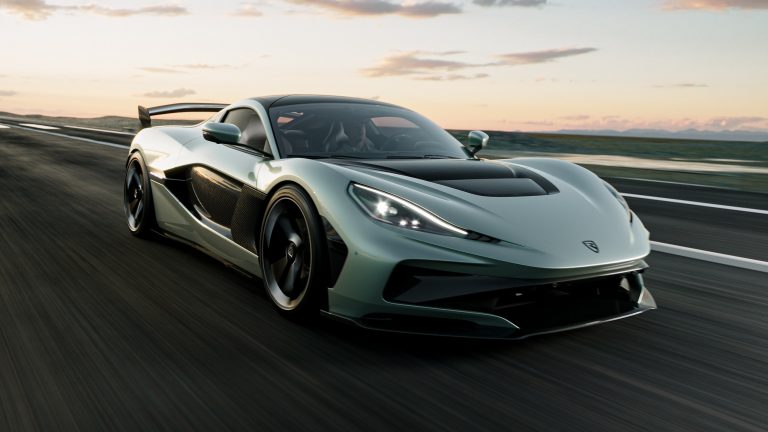Pecron E1500LFP Portable Power Station Hands-On Review

A portable power station is a simple enough product. A battery pack with a few plugs for moving electrons in and out all contained in a plastic box. Obviously, there’s far more to it. I mean, it has to have the ability to connect to your smartphone, right? When I look at the features of this Pecron E1500LFP, I see the physical manifestation of market research, surveys, and focus groups. But, unlike modern BMWs, it seems to pay off in a product that above all else checks the “Fit For Purpose Box” of my product review bingo card.
There are a lot of considerations when choosing a portable power station. I explained them in more detail in my review of the DJI Power 1000 back in June. If you want a better idea of how to decide what size of unit you want, I would give that a read first.
What are the specs of the Pecron E1500LFP?
If you haven’t guessed already, this is a 1,500-watt-hour power bank that uses LiFePO4 batteries. It’s all right there in the name. As I am writing this, it’s on sale for $699 on the company’s website and Amazon. The normal retail price is listed as $1,299. The 1,500Wh capacity is a little bit of an outlier with most companies making either 1,000 or 2,000Wh units. But, for reference, an Anker C1000 is $999, a Jackery Explorer 2000 PRO, as I write this, is on sale for $999, and the BLUETTI AC200MAX is $1,099. Not just Pecron, but for all portable power stations in general, my advice is, unless you are in a desperate situation, I would never spend the full list price. In my experience, there is almost always a sale on the horizon.
The unit feels relatively compact compared to some rivals, measuring 15 x 9 x12-inches. The DJI Power 1000 I recently tested measured 18 x 9 x 9-inches. The Bluetti mentioned above is 17 x 11 x 15-inches. Unless you’re using one of these in an RV and you have a very specific sized place you need to put it, the size differences probably won’t make much difference. The Pecron is 40 pounds. The DJI is the flyweight at 33 pounds. The Jackery is 43 pounds. Finally, the Bluetti is a whopping 62 pounds.

The whole idea of any power bank is to make it convenient to not only carry around energy, but easily access it. On the input side, you can shove those electrons in at a max of 1,400 watts connected to a home AC plug. Pecron says you can fully charge the power bank in 1.8 hours. From my testing, under 2 hours is totally doable. Pecron didn’t send solar panels, but it is rated at a maximum of 700 watts DC charging with a multi-panel setup. It’s also rated at 100 watts DC when charging off a car’s 12V socket, I saw up to 98 watts.
The ability to plug different and varied devices into the E1500LFP is one of its strong points. It is rated at providing 2200 watts of constant power and 4400 watts peak. It has 3, 120V AC sockets. The DC panel consists of a 12V 10amp socket(car cigarette lighter), a 12V 30amp XT60 plug with a cable with alligator clamps for charging a car battery, and a 12V 5amp barrel connector. Below those is a 100w and 18w USB-C along with 4, 18w USB-A ports. Lastly, it has a wireless phone charger, I had to take my iPhone out of its case to get it to work, but it’s a nice touch.


What did I power with the Pecron E1500LFP?
How you use a power station like this is totally up to you. Some people use these exclusively for camping when “roughing it” means they want to sleep in a tent, but still want their drip coffee and a toasted bagel while watching Netflix when they get up. Other users are looking to charge batteries or even plug-in power tools on a jobsite. Some want the peace of mind of having one of these sitting around in case of blackouts. Basically, if you have electrical devices, you’re in the target market for a power station.

One of my standard tests is to run my electrical water kettle that I use every morning to make coffee. It pulls almost 1500 watts, which is a lot for a small appliance. It started at 84% of its battery capacity and by the time I was finished making my pour-over, it was down to 78%. I’ve powered my computer and charged my iPhone and Apple Watch all through USB. I plugged my entire home office setup into the 120V AC plug and it ran it all without a hiccup.
This leads me to one of the main bonuses of the Pecron E1500LFP. It will indeed function as an uninterruptable power supply or UPS. Not all power stations will do this. Most are capable of pass-through charging, meaning you can have power going in and out simultaneously. If they don’t specifically say they function as a UPS, when they lose input power, they will momentarily stop output power, which will cause your computer and other devices, to shut down. This keeps running, I checked.
I did use this for charging RC batteries while away from home and it is ideal for that. But, I wanted to try something harder and push it a little more. I ran a DeWalt 2100psi pressure washer off of it in temperatures in the mid-90s. Yes, I got up early here in Vegas so it was only in the 90s. The pressure washer pulled between 1,000 and 1,450 watts and ran on and off for a half hour washing my car. I checked it every few minutes for overheating and it was never an issue. I started with the Pecron fully charged and used roughly 30% of its capacity.



Pecron E1500LFP Portable Power Station: The Verdict
One of the updates Pecron made on the E1500LFP over previous units is wifi connectivity and a smartphone app. The app connects easily, it looks nice, and it never froze or crashed while using it. I don’t see a lot of value in the app if I’m honest. You can view how much energy is going in and out in real-time. You can see the current state of charge. And you can adjust some settings like screen brightness and auto-off timer. But, you can’t set a charge or discharge limit. If anyone reading this has a power station and you use the app all the time, I would love to know what you’re using it for.


| Pecron E1500LFP Power Station | |
|---|---|
| Value | 9/10 |
| Ease Of Use | 9/10 |
| Durability | 8/10 |
| Performance | 8/10 |
| Overall | 8.5/10 |
Between Hank and myself, we’ve played with a lot of power stations and solar generators. So far, I haven’t seen one that I would consider low-quality or cheap. I think once you get into this price range, a good quality case, a nice clear and bright screen, and good buttons are such a small percentage of the production cost that it’s a no-brainer. Like all the ones I’ve seen, this feels tough. The silicone bumpers on the corners seem like they will take a fall and shrug it off. I will say, I appreciate the handles on the side. The option is to have a basket handle on top, which those are far easier to carry one-handed, but then you can’t stack things on top of them.
The E1500LFP includes a nice zippered case for the included cables. You get the battery charger cables I mentioned, the AC adaptor for charging, the DC cable for plugging in solar panels, and the 12V socket for charging off your car. There’s also a small user’s manual.
Overall, this is a great unit that based on specs and operation, is competitive with the best in the segment. If you can get this for $700 like it is as I write this, it’s a smokin’ deal for a 1,500wh power station. I never got this one below about 20%, but there are a few other reviews on the internet where they have gotten over 1,400wh of energy out of one of these—that’s impressive. A lot of units will shut down when they hit 20% capacity, and maybe that’s for the best. I wouldn’t do it many times but it’s there in an emergency. The power station has a 5-year warranty, with a 1-year warranty on the included cables. I have no complaints with the E1500LFP, and as mentioned above, at its current price, it is an absolute bargain.

Source: www.thedrive.com






